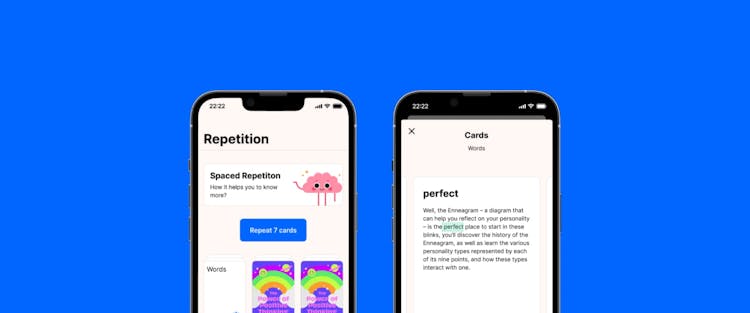One thing artists realize rather early is that criticism is a necessary ingredient for critical acclaim. Thus, they take most critiques in good faith. While at it, they also learn to be discerning to distinguish helpful advice from malicious attacks. However, one critic they often fail to identify and keep shut is themselves, even at the peak of their careers. This can be quite draining and can make the creative journey extremely arduous.
So in this article, we will discuss the keys to identifying and shutting down that unhelpful inner critic. We will be drawing insight from Danielle Krysa’s bestseller, Your Inner Critic is a Big Jerk: And Other Truths About Being Creative. Want to know more? Come along for the ride.
How to silence your inner critic
Here are a few ways to overcome self-doubt and silence that inner critic:
1. Accept that YOU are creative
One of the issues people face is the fear that they are not creative (enough). This is a significant symptom of impostor syndrome. Even those who have attained success still battle the fear. They feel that their successes were mere flukes, nothing that could be repeated.
Krysa tackles this issue head-on in the first chapter of Your Inner Critic is a Big Jerk. The author believes that everyone has an inner artist looking to break free and find expression. She draws the reader’s attention to children’s abilities to be artistically expressive, pointing out that this spirit thrives because of the lack of towering expectations. However, as we grow into adulthood and face criticism, this artistic spirit gets stifled.
In response, she admonishes you to begin again. If you have somehow lost the artistic spirit, you can start afresh. This time, turn away from the accolades or the lack of them. Instead, focus solely on the joys of that moment. As Krysa admonishes: “You don’t have to be a star out of the gate or sell your first painting for ten thousand dollars—just be creative because it brings you joy.”
2. Eliminate labels
Labels are definitive and summarize you so that there is no room for growth. It is one tool your inner critic uses to put you down constantly.
“Labels are sticky. They’re great for organizing your cupboard; but when people put clingy, hard-to-remove labels on themselves, it can prevent creative growth. And sometimes labels have incorrect information!”
Danielle Krysa
Krysa examines the different labels you may be struggling with. The first is the label of parenthood. Many folks feel that the start of adulthood and parenting signals an end to their creativity. The same goes for self-taught students; they think this delegitimizes their stance as artists.
Other equally troubling labels include the stigma of coming from a small town, feeling small from being far behind your peers, or lacking formal education. The learned author advocates that you ought to do away with these labels. Disregard any tag which people have slapped on you or that you may have even put on yourself.
When you complete yanking each of these labels off, fill the now “labelless” cans with whatever else you want. Here, the focus is on growth and self-development. Teach yourself what you want to appear as. Like anyone will tell you, what a can contains is much more important than any label on it.
3. Deal with the bully
Imagine you are in class just before the bell goes for recess. You are sitting with a sinking feeling in your stomach. While every other student around you can hardly suppress their excitement at the coming break, you are petrified because you know that the class bully awaits you just outside your doors.
You may no longer be a timid preschooler afraid of the class bully, but the fear might still be familiar, occasioned by self-doubt.
Your inner critic is the biggest bully of all. While you can move away from others’ toxic opinions, you can scarcely run away from yourself. Hence, your inner critic is always around, looking to remind you of your doubts and fears. You must deal with this bully just as you deal with any other bully: standing up to it.
In Your Inner Critic is a Big Jerk, you will find the steps to trumping these fears. The first step is identifying the source of the inner critic. It might have its origins in childhood trauma or any other external source. The following strategy is to unmask the fear and doubt, staring them in the face and calling their bluff.
Finally, you need to replace the inner critic with something positive and soothing. Krysa suggests that you turn your critics to cheerleaders. This is one sure way of converting negative energy into some positive ones.
4. Redefine failure
A few things batter one’s confidence the way failure does. The matter is, it reinforces every negative thought and feeling you’ve had about yourself and your capabilities.
But you cannot wish failure away, no matter how hard you wave your magic wand. Also, failure is an integral component of success. Every successful person you can think of has failed at one thing or another. From Thomas Edison to J. K. Rowling, the list is endless. Thus, instead of wishing failure did not exist, a more rounded view of the concept would serve you better.
“Failure is a bruise, not a tattoo”
Jon Sinclair
In Your Inner Critic is a Big Jerk, you learn that failure is but a stepping stone towards success. Moreover, the book reveals that not only is failure something to run towards, but it can also provide lessons you cannot learn any other way.
Thus, it is up to you to decide what messages and signals failure sends to you. When you stop viewing failure as the enemy, you will harness the power of failure to achieve more.
5. Break through blocks
The average creative is familiar with blocks. They arise unbidden, lapping up your creative juices and leaving you unable to move even one limb. What is more, within this period of inertia, the inner critic swings into action, seizing the opportunity to remind you that you cannot succeed as a creative.
This is an experience Danielle Krysa is well aware of, being a writer herself. Hence, drawing from experience, she informs you not to sit on your hands to wait out the block. Instead, in the last chapter of Your Inner Critic is a Big Jerk, she lays out specific steps you could take to overcome creative blocks.
Some wonderful suggestions include seeking outside opinion and validation, trying out some mundane activity, and even fashioning out a creative cave. One thing is sure; putting all of these to work will undoubtedly take your mind away from the pesky inner critic.
There is no need to walk around with niggling doubts filling your head. Of course, a little doubt is necessary and might even be essential for sustaining the creative process. However, consistent putdowns limit your success, and impostor syndrome can stop you from reaching the peak of your potential. In this article, we’ve drawn lessons from Your Inner Critic is a Big Jerk to show you how to silence this critic once and for all. Unfortunately, the snippets here do no justice to the book. To get a fuller understanding, go to the Headway app to read or listen to its summary and get all key ideas in just 11 minutes.





